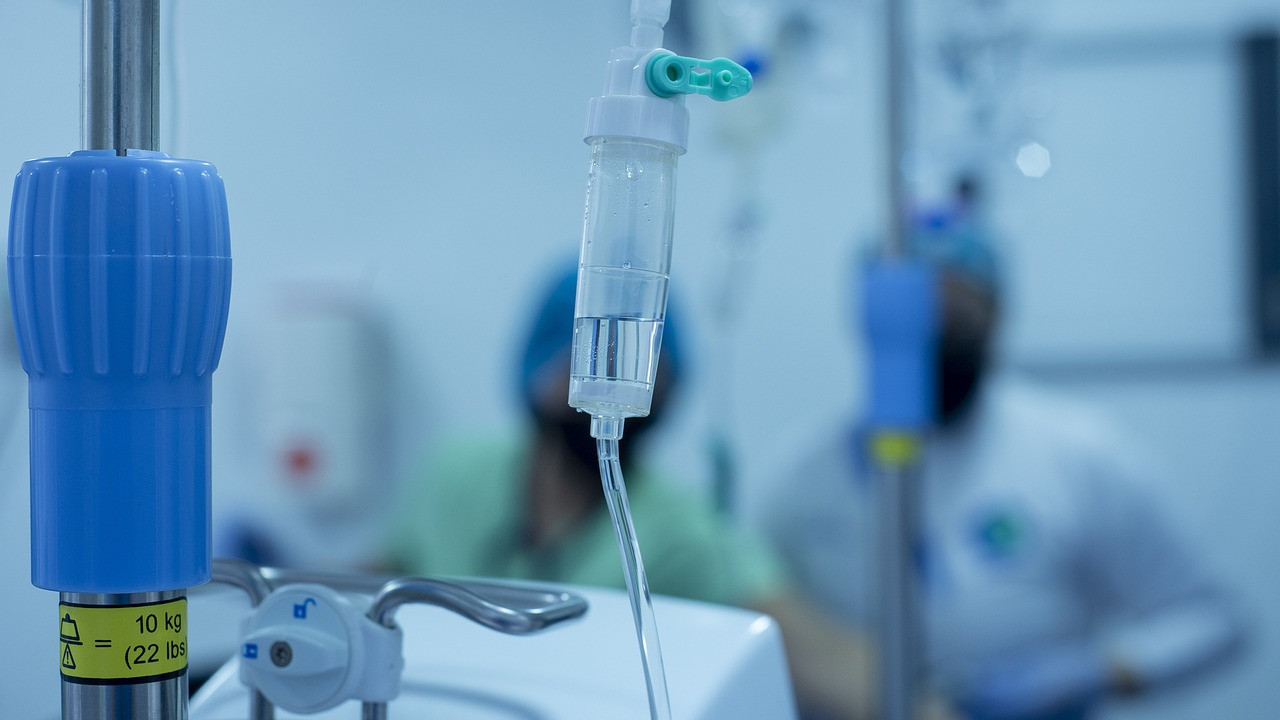Am J Respir Crit Care Med Published online November 23, 2021 | https://www.atsjournals.org/doi/pdf/10.1164/rccm.202103-0755OC
Digest author(s): Emer Kelly (e-Learning Director) | 8 February, 2022
The mortality rate for patients admitted to the ICU with COVID-19 and particularly in those who are mechanically ventilated is high (30-40%). To date only glucocorticosteroids and IL-6 receptor antagonists are know to improve survival in those who are severely ill. Microvascular thrombosis of the pulmonary vasculature is a common finding at autopsy in COVID-19 and this is correlates with the observation of endotheliopathy as a prominent feature of the COVID-19 ARDS pathophysiology. The level of circulating soluble thrombomodulin (sTM) was significantly associated with mortality in patients with COVID-19 (similar to patients with other severe infections). sTM is a key member of the anticoagulant protein C system, and its cleavage from the endothelium may be involved in the pathophysiology of the prothrombotic phenotype observed in COVID-19. Prostacyclin (PFI2) is an endogenous prostanoid formed and released by endothelial cells. It has paracrine function including vasodilation, platelet inhibition and has been used in primary pulmonary hypertension and critical limb ischaemia.
This Danish multicentre, randomized (1:1, active: placebo), blinded, parallel grouped exploratory trial used low-dose continuous infusion of prostacyclin versus placebo for 72 hours in mechanically ventilated patients with COVID-19 with documented endotheliopathy, as measured by a circulating sTM of ≥4 ng/ml to investigate the safety and efficacy of prostacyclin. The primary outcome was the number of days alive without mechanical ventilation within 28 days from randomisation. Secondary outcomes included 28- and 90- day mortality, mean daily Sequential Organ Failure Assessment (SOFA) sore in the ICU up to Day 90, days alive without vasopressor in the ICU within 28 and 90 days, days alive without mechanical ventilation and days alive without renal replacement.
Prostacyclin (1 ng/kg/min) or placebo (equal volume of saline) was administered as a continuous intravenous infusion for 72 hours. All patients were assessed from randomisation through Day 90. Sample size was estimated using data from a RCT in ARDS and a sample size of 80 was selected to allow for ~10 % dropout based on an estimated true effect of the intervention of 20% increase in days alive and free of mechanical intervention.
Between June 2020 and January 2021, 138 patients were screened with 41 randomised to prostacyclin and 39 to placebo. The number of days alive without mechanical ventilation at 28 days was a median of 16 days in the prostacyclin group versus 5 days in the placebo group (difference of medians, 10.96, 95% CI, -5 to 21; p=0.07). Mortality at 28 days was 21.9% in the treatment group and 43.6% in the placebo group (risk ratio, 0.50; 95% CI, 0.24 to 0.96; p=0.06). Ninety-day mortality was 31.7% versus 48.7% (p=0.17). SOFA score was 5.7 in the prostacyclin group versus 6.7 in the placebo group (adjusted difference, 1.1; 95% CI, 0.28 to 1.92; p=0.009). No significant difference in serious adverse events and reactions within 7 days was found between groups.
This multicentre RCT did not find a statistically significant difference in the number of days alive without mechanical ventilation between COVID-19 patients treated with prostacyclin or placebo. There was a trend towards a benefit however, as the point estimate favoured the prostacyclin group over the placebo group in terms of the primary and all secondary outcomes. The mean daily SOFA scores were statistically significantly lower in the prostacyclin group.
This paper illustrates the challenges to setting up an RCT rapidly in the setting of a pandemic with rigorous protocols to ensure validity of data but an urgency to have results available when relevant which may have impacted on sample size selection. It investigates a known therapy in a new field based on emerging pathophysiology and in a precise subpopulation of COVID-19 patients with elevated sTM. The limited sample size is likely to have rendered this study underpowered and conclusions cannot be inferred from the current findings. Further investigations are warranted before clinical implications are possible.





